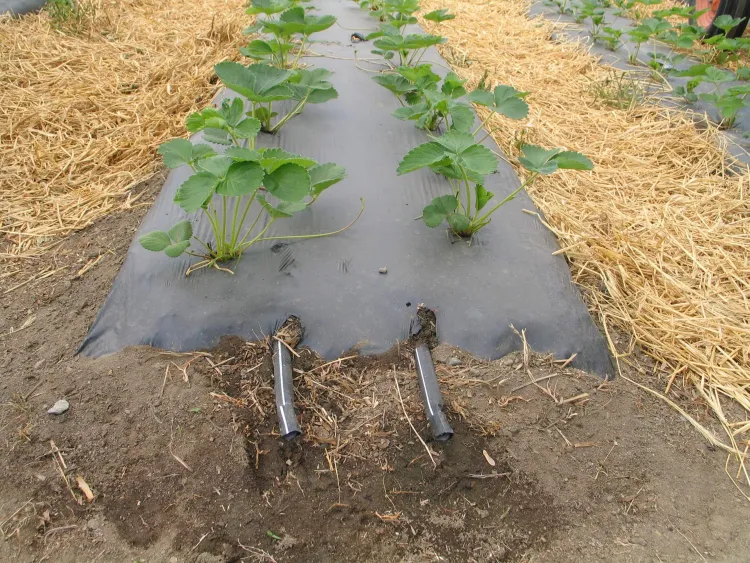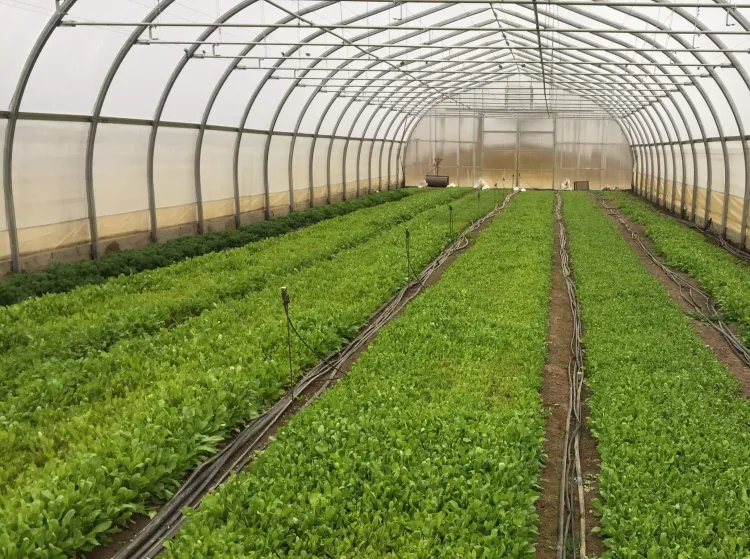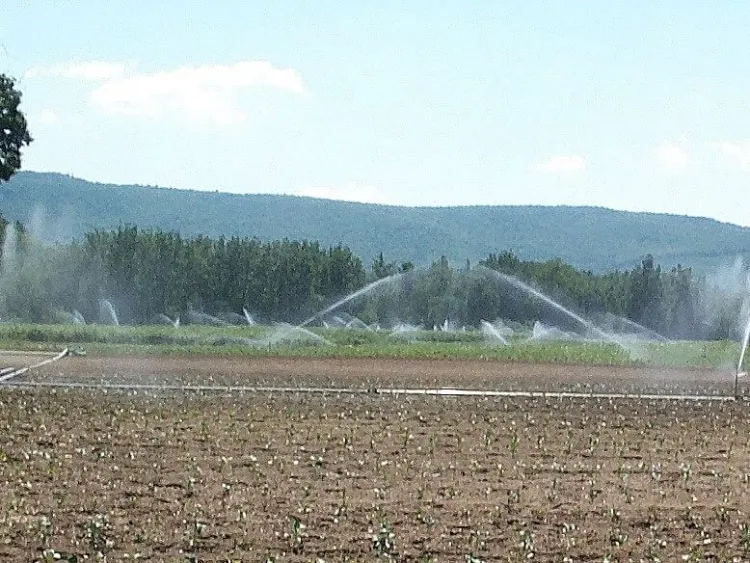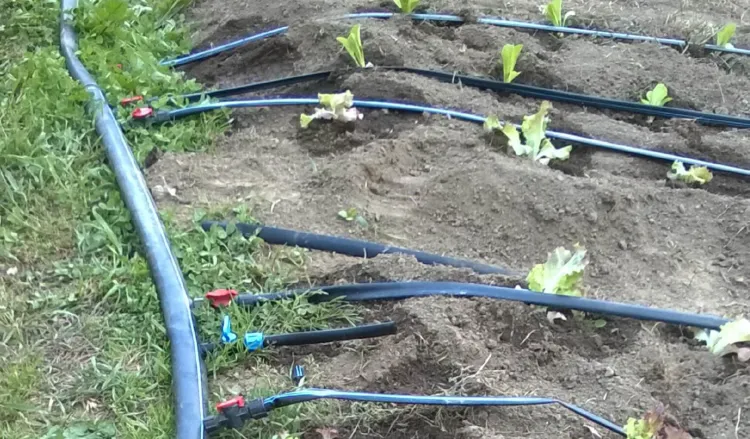The primary concern of crop irrigation is to deliver “enough water in the right place at the right time.” The secondary, although more direct, concern is that irrigation equipment and management logistics must work for a farm ($, labor, water availability) and prevent harm to customers or the environment. Irrigation with contaminated water is the most common primary cause of whole-crop contamination, and recent high-profile cases of produce-born illness (e.g. 2007 Spinach, 2017 Romaine lettuce). Irrigation from a clean water source is lowest risk (e.g. drilled well), but is too expensive or not possible for many growers. Thus, more variable surface water sources are more common in the northeast, especially for larger crop fields. Although farms can’t control the upstream contamination of a surface irrigation water source, there are easy, low-cost strategies to mitigate contamination reaching customers.

Design Goals
- If possible (to conserve resources and reduce contamination risk), irrigation targets root systems directly, avoiding contact with harvest portion of crops (drip irrigation under mulch layer)
- Get to know the quality of the farm's irrigation water sources, including upstream land use and point source contamination risks of surface water sources.
- Given constraints, use the cleanest irrigation source possible, especially for overhead applications.
- Minimize or avoid overhead irrigation with surface water during the harvest window of raw-eaten crops (e.g. spinach, salad mix).
- If overhead irrigation of raw-eaten crops with surface water is unavoidable, make and follow a plan to minimize the risk of whole-crop contamination.
Design Elements
- Drip irrigation (ideally under a mulch layer) is used for established mid- to long-season crops.
- Backflow prevention is installed to prevent contamination of drilled well trunk lines.
- Irrigation lines are flushed annually, or as needed to prevent clogging and contamination.
- If surface-water is used, an upstream water-quality assessment is completed and updated seasonally, as needed.
- Overhead irrigation of raw-eaten crops is limited to germination, seedling establishment, or if needed for maturing crop types (e.g. leafy salad mix, carrots, beets).
- If overhead surface water is applied to raw-eaten crops during their harvest window (for irrigation or frost protection) 3-4 days minimum “die-off” waiting period is observed before harvest. This is enough time to achieve 95-99% die-off of waterborne E.coli bacteria (a proxy for human pathogens).
Benefits
- Use of clean irrigation water minimizes whole-crop contamination risk and improves the quality and consumer safety of market crops.
- Effective drip irrigation systems can save water, time, and improve crop yields and quality.
- No-cost risk reduction - observing a post-irrigation waiting period before harvest increases pathogen “die-off” on the surfaces of raw-eaten produce and is thus a no-cost strategy to reduce the risk of whole-crop contamination from overhead application of surface water.
Photos



Authors: Hans Estrin and Vern Grubinger, UVM Extension
This work is supported by the Food Safety Outreach Program Name, project award no. 2023-70020-40688, from the U.S. Department of Agriculture’s National Institute of Food and Agriculture. Any opinions, findings, conclusions, or recommendations expressed in this publication are those of the author(s) and should not be construed to represent any official USDA or U.S. Government determination or policy.
